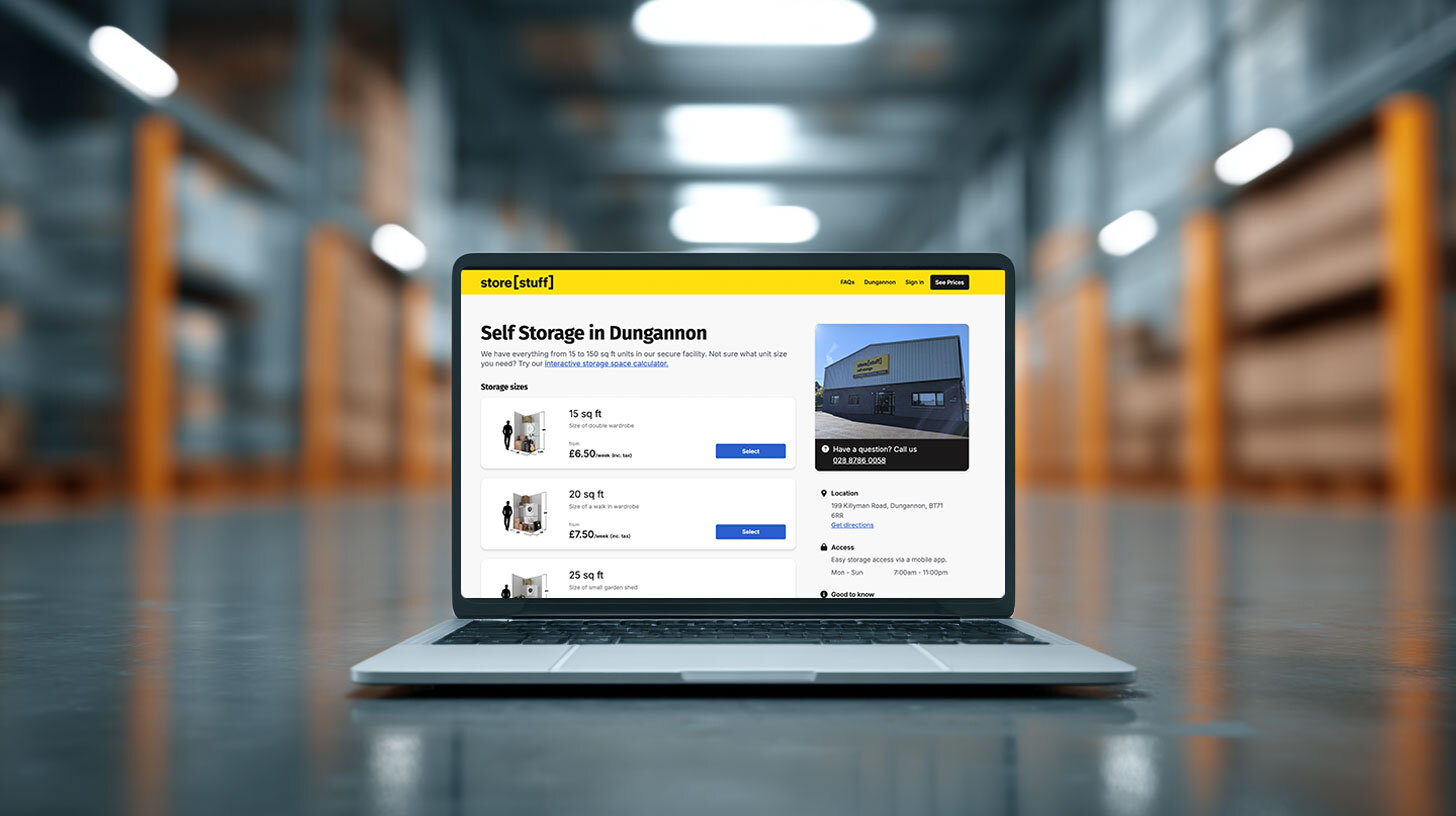Revamping your business to an unmanned self storage model? Check out Gavin’s advice on the tech essentials you need in order to slash admin effort and give customers a truly contactless experience.
When it comes to turning your current self storage facilities into unmanned ones, you need three key pieces of technology in place, at the minimum: online reservations and payments software, an ecommerce website, and self-service smart entry points. This tech—and the automation they deliver—are key to succeeding with this customer-friendly, low-effort, and highly profitable service approach. To help you along, here’s my advice on what to look for and think about as you research your options for each.
Software
Historically, large operators have had a huge advantage over small and mid-sized storage businesses. Their scale meant they could afford to build their own software and tools to manage and track business and drive revenue while everyone else was stuck using spreadsheets and ledgers. But times have changed. Affordable, powerful software products are available to operators of all sizes. Choose a platform that:
- supports online rentals and payments and is underpinned by a reputable payment processor that supports the range of digital payment methods your tenants are likely to want to use (like credit and debit cards, wallets, and bank debits);
- integrates with your accounting software (like Xero, QuickBooks, etc), so you don’t end up creating new admin for yourself by having to manually export and import data between systems and waste time reconciling accounts;
- is cloud-based and device agnostic. This means you can keep tabs on reservations and business from any computer or mobile, regardless of make and model—so long as you’re connected to the internet. It stuns me that there are still software companies out there that only work on a PC desktop. At my Store [Stuff] facilities, cloud-based means I can manage both of my locations from my phone—whether I’m about to step into the gym or overseeing the kids’ homework. Everything’s always at my fingertips;
- offers automated workflows for your most repetitive, time-consuming tasks, like identify checks; emailing customers their rental confirmations, invoices and receipts; sending rental contracts; emailing move-in instructions; flagging failed payments; chasing late payments; collecting penalty fees; blocking unit access; etc. The more of these tasks you can take off your staff’s plates, the better;
- offers you top-notch support (including migration of all of your existing client data and fast support by phone or live chat).
Your website
With the right software at the backend, you need to upgrade your website in two ways to enable self-service:
- to allow tenants to select and pay for units; and
- to manage their account (for example, update their billing address, add new card details themselves when their old one expires, or extend/end their rental).
This will require connecting your online sales and payments software to your website to turn it into an ecommerce site. If you’ve got a web team, perhaps they can do this for you. If not, you can hire a web agency. But sometimes your new back office reservations software will include a self storage ecommerce website as part of the platform, and the simplest solution is to connect it to your site’s domain (ie URL), customize it to look as much as possible like your current site—with your brand logos, colours, images, etc—and then link all of the key hyperlinks and buttons on your current website (like Choose Your Location and Book a Unit) to the ecommerce platform. Done right, your customers will never know your site lives on two platforms, and you and they get the benefit of a seamless reservations, payment, and fulfilment experience.
Facility and unit access
The third automation you need is access control—and this typically requires hardware upgrades at the site and unit entry points. Depending on the solution, this could be one of your biggest areas of investment when you switch to an unmanned model.
The most advanced access systems, like entrance barriers equipped with vehicle plate readers and individual unit locking mechanisms that give customers access via contactless app technology, can cost in excess of $200/unit. At my sites I opted for the Nokē solution, which works really well and cost around $200 per unit door and $550 per shared access gate. Keypad entry systems that generate unique codes for each customer are a great, lower-cost option, though they will not cover individual locks. In this case, you can use traditional padlocks and invest in padlock vending machines that take card payments on premises to, as a minimum, automate lock sales. Some operators leave units unlocked with padlocks inside for their customers. This is another approach that seems to work well.
If you do opt for smart entry, make sure the entry system and your software system integrate with one another. This means they can automatically share info back and forth, so whenever a customer books a unit, your smart entry system knows automatically, sends the unique access details for that customer to your reservations system, and your system can automatically send those instructions to the customer…all without you ever needing to lift a finger.
Get your software, website and smart entry right, and you’ll be primed to offer your tenants a fast, frictionless, self service experience from start to finish—which is more convenient for them, better for sales, and will dramatically lighten the admin load for everyone on your team.
Need help? Explore how Stora can make switching from traditional self storage to unmanned easier, or schedule a demo to see our all-in-one web sales and facility management platform in action.







